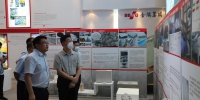[预告]09.18全球院讲座《AGU Seminar》
时间: 2015年09月18日(星期五) 10:00-12:00
地点: 京师科技大厦B座520会议室
主题1: Publishing with AGU
主题2: Climatic Impacts of Globally Shifted Anthropogenic Emissions
主讲人: Dr. Jonathan H. Jiang and Dr. Yuan Wang
主讲人简介:
AGU Editor for Earth and Space Science Dr. Jonathan H. Jiang is a Principal Research Scientist at NASA’s Jet Propulsion Laboratory (JPL), California Institute of Technology. Dr. Jiang is recognized internationally as a leading expert in satellite remote sensing. He has authored and co-authored 110 peer-reviewed journal publications and book chapters. Dr. Jiang has twice received NASA Exceptional Achievement Medals in 2010 and in 2013 for his leadership and innovation in Earth and space science research using NASA satellite observations.
美国地球与空间科学刊物编辑蒋红涛博士是加州理工学院喷气推进实验室的首席科学家。蒋博士和他的科研团队在卫星观测技术和空间科学研究领域成就显著,曾两次荣获美国宇航局颁发的杰出贡献勋章。
讲座简介:
1. AGU Seminar: Publishing with AGU (20 minutes)
The preparation of a manuscript publication is a very important step in the communication of a research study and making a contribution to a specific scientific field. The purpose of this editorial seminar is to discuss how to approach and write a well-organized manuscript for a successful publication in the AGU journals. The topics will include: “Why Publish with AGU?”, “AGU Manuscript Types”, “Keys for Successful Submission”, “Keys for Reviewing Manuscript” and “’Secrets’ of how editors handle the review process”.
About AGU: American Geophysical Union (AGU), established in 1919, is one of the world’s leading publishers of scientific literature. As a professional society of scientists, AGU publish peer-reviewed journals for the advancement of Earth and Space Sciences.
2. Climatic Impacts of Globally Shifted Anthropogenic Emissions
The geographical shift of global anthropogenic aerosols from the developed countries to the Asian continent since the 1980s could potentially perturb the regional and global climate due to aerosol-cloud-radiation interactions. We use an atmospheric general circulation model with different aerosol scenarios to investigate the radiative and microphysical effects of anthropogenic aerosols from different regions on the radiation budget, precipitation, and large-scale circulations. An experiment contrasting anthropogenic aerosol scenarios in 1970 and 2010 shows that the altered cloud reflectivity and solar extinction by aerosols results in regional surface temperature cooling in East and South Asia, and warming in US and Europe respectively. These aerosol induced temperature changes are consistent with the relative temperature trends from 1980 to 2010 over different regions in the reanalysis data. A reduced meridional streamfunction and zonal winds over the tropics as well as a poleward shift of the jet stream suggest weakened and expanded tropical circulations, which are induced by the redistributed aerosols through a relaxing of the meridional temperature gradient. Consequently, precipitation is suppressed in the deep tropics and enhanced in the sub-tropics. Our assessments of the aerosol effects over the different regions suggest that the increasing of Asian pollution accounts for the weakening of the tropics circulation, while the decreasing of pollution in Europe and US tends to shift the circulation systems southward. Moreover, the aerosol indirect forcing is predominant over the total aerosol forcing in magnitude, while aerosol radiative and microphysical effects jointly shape the meridional energy distributions and modulate the circulation systems.
(全球变化与地球系统科学研究院)
